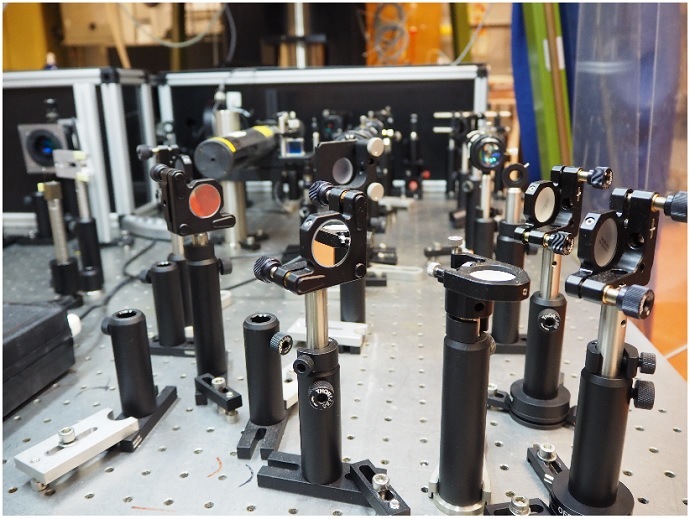01-04-2016
Leiden physicists have managed to detect a single molecule called dibenzoterrylene in a new crystal, and found that it is a candidate component for a quantum network. Future quantum computers will need such a network to work together while maintaining their advantages. Publication in ChemPhysChem journal.
Quantum computers hold a big promise for the future. With exponentially faster calculations they should be able to solve scientific problems and crack codes that are currently untouchable for modern computers. And to fully exploit the potential of quantum computers they would have to be connected through a quantum network. In regular networks the so-called qubits have to transform into ordinary bits in order for a classical wire to carry them. That way the speed advantage of the quantum computer would be completely lost.
Individual molecule
Leiden physicist Michel Orrit studies single molecules as candidate building blocks for the necessary quantum network, using a technique that he developed in the early ‘90s and which made him the first person to see an individual molecule with the use of fluorescence. Orrit’s invention laid the groundwork for a follow-up technique that went on to earn the 2015 Nobel Prize in Chemistry. And to this date, his original technique still proves to be valuable in modern research. Apart from bringing him the 2016 Physica Prize, it enabled Orrit to detect an individual dibenzoterrylene molecule, together with PhD student Nico Verhart, and check its properties for use in quantum networks.
Radio channel
The researchers point a laser beam on their sample, which is extremely diluted—100 nanomole per liter—leaving only a few molecules in focus for the laser. Needless to say, temperatures are just above absolute zero, so the particles stay neatly in place. Slowly changing the laser’s color, they try out many different frequencies to which a molecule might tune in. It is similar to a radio show trying out several broadcast signals to match the frequency that your radio is tuned in to. Every molecule is programmed to only interact with light of a very specific frequency, like an old radio that is stuck to one channel. When it gets hit by light of exactly the right color, it absorbs and emits those light particles; it fluoresces.
Stable
Once the physicists have stumbled upon a matching color, they study the stability of the fluorescence signal. The more stable the signal, the better equipped the molecule is to serve as building block of a quantum network. The frequency of an instable molecule will drift away over time, for example, or the molecule could enter a dark state, in which it doesn’t fluoresce at all for a while. It turns out that dibenzoterrylene molecules present neither of these instabilities and are good candidate building blocks for a quantum network.

Single Molecule Detected for Use in Quantum Network

Single Molecule Detected for Use in Quantum Network













